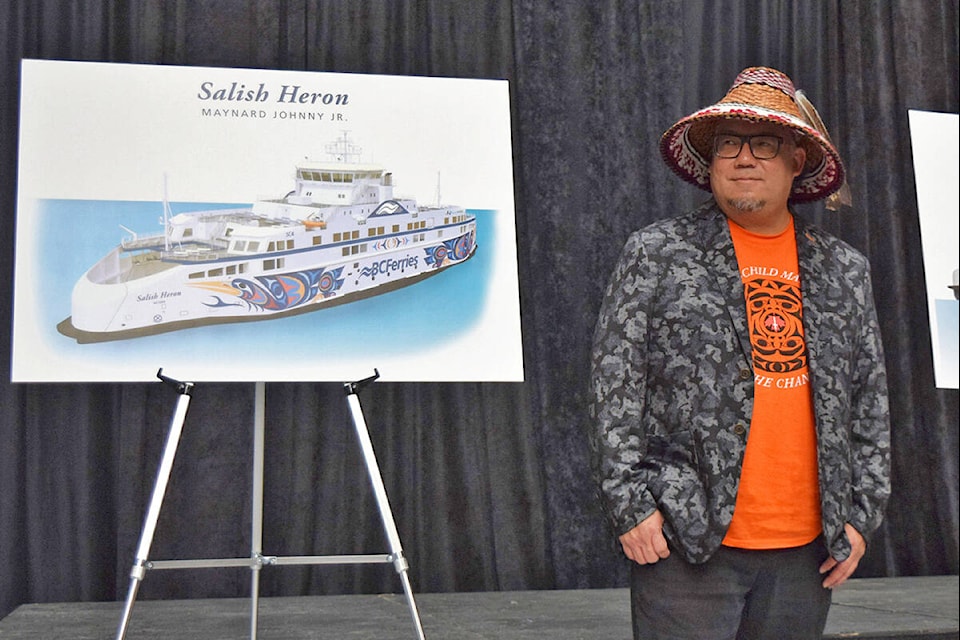When Indigenous artist Maynard Johnny Jr. unveiled the heritage-inspired Salish art destined for BC Ferries’ newest Salish Class ferry, some described it as an impactful act of Indigenous representation and reconciliation.
The heron depiction, the namesake of the new Salish Heron set to launch in spring 2022, is “an important first step forward to raise awareness to the history of Canada and its Indigenous people,” Johnny said on Monday during a ceremony in the lobby of The Atrium building in Victoria, BC Ferries’ home base.
The self-taught, style-blending and award-winning graphic artist was inspired by the heron’s tendency to lead people to fishing holes through its prominence in the Chemainus territory and has depicted them before on cedar paddles, drums and in paintings.
“Any form of art opens a door to ease people’s tensions and allow for us to express our feelings and concerns that maybe we can’t do in a chamber of commerce or business,” he told a crowd of family members, BC Ferries staff and members of the First Peoples’ Cultural Council gathered in The Atrium lobby Monday morning.
BC Ferries passengers will ride the Salish Heron on trips to Pender, Saturna, Mayne and Galiano islands from from and to Swartz Bay next year. The ferry will hold up to 138 vehicles and 600 passengers per trip, identical to Salish class vessels Salish Eagle, Salish Orca and Salish Raven. Those vessels also received accompanying Indigenous liveries according to Cultural Council special advisor Cathi Charles Wherry, who oversaw their commission.
READ ALSO: Salish Orca ready to set sail in B.C. waters
READ ALSO: Island Coast Salish artist’s colourful design selected for newest BC Ferries vessel
Given all the years BC Ferries have traversed waterways belonging to British Columbia’s First Peoples, “we have not always done so in the spirit of harmony and reconciliation,” company CEO Mark Collins said.
“Today is another small step, we hope, in rejoining our ferry company with the culture and spirit of the people who are the original navigators in these lands.”
Wherry, a member of the Rama Mnjikaning First Nation, said the Salish Heron art project speaks to the next generation of Indigenous peoples in B.C., such as the Lekwungen Traditional Dancers who performed at the unveiling, or Johnny’s two young grandchildren who were in attendance. “Young people seeing that on the ferries, they see themselves,” she said.
It also spoke towards broader understanding of First Nation reconciliation, Wherry said.
“With most settler agencies, there has been a history of not considering First Nations at all, disappearing us,” she said. “These current efforts move away from that type of approach. Reconciliation isn’t just emotional. It’s also economic.”
Representation of Indigenous thought can go further than graphic design, Johnny said.
“I always say the future is Indigenous – and I don’t mean we’re taking over. We have to implement a lot of our traditional and cultural beliefs into today’s systems to save our environment.”
Do you have a story tip? Email: kiernan.green@blackpress.ca.
Follow us on Twitter and Instagram, and like us on Facebook.
